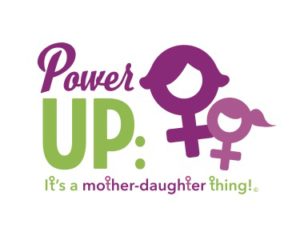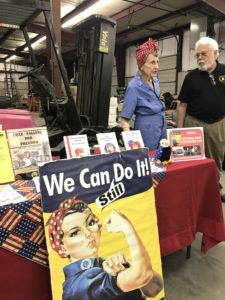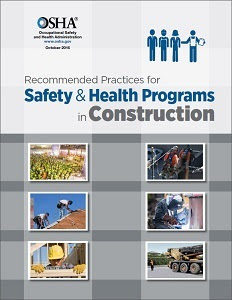 Women remain under-represented in the construction industry, and yet there are many rewarding career opportunities for women. To educate middle school girls and their mothers about construction as a career path, Power Up: It’s a Mother Daughter Thing! will be held March 21, 2017 in Birmingham, Ala. Debbie Dickinson, CEO of CIS, is one of several speakers who will share her personal journey and discuss tips for success in construction.
Women remain under-represented in the construction industry, and yet there are many rewarding career opportunities for women. To educate middle school girls and their mothers about construction as a career path, Power Up: It’s a Mother Daughter Thing! will be held March 21, 2017 in Birmingham, Ala. Debbie Dickinson, CEO of CIS, is one of several speakers who will share her personal journey and discuss tips for success in construction.
The is a collaborative partnership of the Central Six Development Council, Alabama Workforce Council Region 4, Girls Inc. of Central Alabama, Robins & Morton, and AIDT/AWTC. More than 300 attendees, employer partners, and training providers attended the first event in 2016.
The one-day event includes information tables from area employers in construction who will provide education on careers related to the firm’s services. In addition, presentations by female professionals will who work as project managers, estimators, schedulers, quality control managers, engineers, and business developers.
Debbie Dickinson shared her experience. “When people ask what I do, eyes get big and the most common response is, ‘Really? How did you get into that line of work?’ There is little awareness, particularly among young women and their parents, about the great careers in our industry. Knowing I have their attention, it is fun to talk about developing skills and adapting training to next generation learners, safety, and the long-term satisfaction related to being involved in the construction of buildings or infrastructure.”
The event will be held from 5:30 pm to 8:30 pm at the AIDT/Alabama Workforce Training Center at 3500 6th Avenue South, Birmingham. Students who are interested in attending should contact their school guidance counselor or principal for more information.
“Applications are disseminated to career technical education directors, career coaches, guidance counselors, and principals in our region. Young women must have the application signed by a female legal guardian, who will attend the event with the student,” explained Edie Gibson, Industry Coordinator for Central Six Development Council.
Other Resources for parents and educators about women working in construction:
CPWR The Center for Construction Research and Training
National Association of Women in Construction
OSHA Women in Construction
The Rise of Women in the Construction Industry, blog post by Construction Labor Contractors

CIS Expands Overhead Crane Safety and Inspection Services
/in Company News /by Tracy BennettCrane Industry Services, LLC, announces the addition of Shawn Galloway, an overhead crane inspector and technician with extensive experience in military and industrial applications. “Shawn will focus on safety evaluations of people and equipment in heavy industry, utility, and manufacturing environments,” said Debbie Dickinson, CEO.
Galloway spent nearly 16 years serving in the U.S. Army, and later working for the Department of Defense where he was responsible for developing safety, maintenance, and readiness programs. As general manager for JIT Chemical Corp., he developed and enforced safety procedures, and made sure all electric motors, controls, and mechanical pump equipment was maintained according to company procedures for operation in a highly corrosive environment. More recently, he worked as overhead and portal crane service technician and inspector for Konecranes.
“Among the most common equipment deficiencies found on overhead cranes and hoists are structural and wire rope problems, often caused by lack of preventative maintenance or improper operation due to lack of training,” said Galloway.
Is Your Company Ready for the Next Rosie the Riveter?
/in Skilled Labor Supply /by Tracy Bennett“We heard great insights from speakers Kayleen McCabe of DIY Network’s Rescue Renovations and a vivacious senior woman, who was a real-life Rosie the Riveter during World War II,” said Dickinson. In addition, Dickinson joined a panel discussion with Fulton County College and Career Director, Lorissa Edwards, and student panelist, Breionna Glover.
Fulton County College and Career Director, Lorissa Edwards, and student panelist, Breionna Glover.
In a recent article, The Business Case for Diversity and Inclusion, author Brent Darnell says: If all industry organizations and companies would commit to some very simple initiatives, we could improve diversity and inclusion dramatically in a relatively short time.” He claims that evidence suggests the industry does not value diversity, which creates barriers for wooing outsiders to join the construction workforce.
Get involved in local workforce development groups. State and local groups can help connect employers to re-entry citizens, transitioning veterans, graduating high school students, and others looking for a new career opportunity. Often funding is available to offset costs of training programs for these individuals. Find a workforce development boards in your area at CareerOneStop, a website sponsored by the U.S. Department of Labor.
Agree to mentor someone. Provide role models. As Brent Darnell says, this means “providing meaningful training for the white guys.” An article published by Chief Learning Officer provides suggestions for how male mentors can develop women at work. The principles apply to reaching minorities or other under-represented demographics in the workforce.
Create training opportunities or make training accessible. This might be as simple as funding transportation for students from school to your business or job site for hands-on instruction. Or lobby your state to recognize October as Careers in Construction month, then host an open house. NCCER can provide free sample text for writing a proclamation.
If you are genuinely interested in hearing from young people or minorities, then roll up your sleeves like Rosie and get to work making it happen in a meaningful way for your company.
Enlightening Girls about Careers in Construction
/in Company News, Skilled Labor Supply /by Tracy BennettThe is a collaborative partnership of the Central Six Development Council, Alabama Workforce Council Region 4, Girls Inc. of Central Alabama, Robins & Morton, and AIDT/AWTC. More than 300 attendees, employer partners, and training providers attended the first event in 2016.
The one-day event includes information tables from area employers in construction who will provide education on careers related to the firm’s services. In addition, presentations by female professionals will who work as project managers, estimators, schedulers, quality control managers, engineers, and business developers.
Debbie Dickinson shared her experience. “When people ask what I do, eyes get big and the most common response is, ‘Really? How did you get into that line of work?’ There is little awareness, particularly among young women and their parents, about the great careers in our industry. Knowing I have their attention, it is fun to talk about developing skills and adapting training to next generation learners, safety, and the long-term satisfaction related to being involved in the construction of buildings or infrastructure.”
The event will be held from 5:30 pm to 8:30 pm at the AIDT/Alabama Workforce Training Center at 3500 6th Avenue South, Birmingham. Students who are interested in attending should contact their school guidance counselor or principal for more information.
“Applications are disseminated to career technical education directors, career coaches, guidance counselors, and principals in our region. Young women must have the application signed by a female legal guardian, who will attend the event with the student,” explained Edie Gibson, Industry Coordinator for Central Six Development Council.
Other Resources for parents and educators about women working in construction:
CPWR The Center for Construction Research and Training
National Association of Women in Construction
OSHA Women in Construction
The Rise of Women in the Construction Industry, blog post by Construction Labor Contractors
SCOAR forms College & Technical Scholarships Committee
/in Company News /by Tracy BennettA number of scholarships are available for students interested in construction safety, engineering, and technical craft skills. Applications are vetted by SkillsUSA and the Scholarships Committee will receive support from NCCER. Other members of the committee include Mittie Cannon, AMEC Foster Wheeler, and Juan Romero, FBM-SPI.
If your company is a member of SCOAR and is interested in providing scholarships to be promoted through SCOAR, please contact Debbie Dickinson at debbie@craneindustryservices.com.
Does your organization need to muck out the llama dung?
/in Safety /by Tracy BennettBy Debbie Dickinson
Randy Bakel, Executive Director of the Southeastern Construction Owners & Associates Roundtable (SCOAR), recently shared a story that reminded me of the importance of performing safety and productivity audits. During the Feb. 2 Program Meeting, held in Orlando, Fla., Bakel shared this story about outdated military specifications.
In the early 1940s, so the story goes, The U.S. Army wanted a dependable supply of llama dung, as required for treating the leather used in airplane seats. Submarine attacks made shipping from South America unreliable, so the Army attempted to establish a herd of llamas in New Jersey. Only after the attempt failed did anyone question the specification.
Subsequent research revealed that the U.S. Army had copied British Army specs dating back to Great Britain’s colonial expansion. The original specification applied to saddle leather needed by the Calvary. Apparently the leather smell made untrained horses skittish. Treating the saddle leather with llama dung imparted an odor that calmed the horses. The treatment, therefore, became part of the specification for the leather, which remained unchanged for a century.
Safety and productivity audits help companies work safer and smarter by identifying gaps in skills and knowledge. The tendency is to keep doing what we always do. Audits provide managers with an opportunity to step back and assess potential improvements. While, engineers may need to question the rationale behind specifications, safety managers, supervisors, and trainers, may need to make sure training is not just compliance based. Crane Industry Services designs audits to help employers develop industry best practices that result in selecting workers with the right skills for industry specific job tasks.
“Sometimes we get so good at solving problems that we forget to ask if the problem has been posed correctly. On your next project, make sure you know the reasoning behind the specs. If the reason given is ‘That’s the way we’ve always done it,’ watch out for llama dung,” said Bakel.
The next SCOAR meeting is May 8-10, 2017 in Longboat Key, Fla.
Sometimes Safety is Best Achieved by Somebody’s Daughter
/in Resources, Safety /by Tracy BennettBy Debbie Dickinson
Between Thanksgiving and the New Year, there are opportunities to stop and reflect on what is important to us an individuals, as project and team leaders, and as companies. Crane Industry Services is thankful for the people we’ve worked with this past year, who share the common goal of keeping America’s workforce safe.
While we hope we are an integral part of your training and inspection plans, the hard work of implementing safety and health programs inside your organizations falls on your shoulders. To inspire you in 2017, we’d like to share a few stories and resources.
Handy Dan by Angela. Credit: Safety + Health magazine.
The Campbell Institute of the National Safety Council honors organizations that sustain excellence in health and safety activities. Richard Cerenzio is Corporate HSE director at ISN, a member of the Campbell Institute. He recently posted a story about how a poster contest open to worker’s families was successful at engaging workers to reduce injuries. Thanks to some creative thinking and a 14-year-old girl’s poster of Handy Dan the purple octopus, hand-related recordable injuries dropped by more than half.
During your downtime this holiday season you might want to read OSHA’s new Recommended Practices for Safety and Health Programs in Construction. Perhaps not as engaging as the story about Handy Dan, but equally worthwhile. This new document is a complement to recommended practices for employers in general industry.
The recommendations may be particularly helpful to small- and medium-sized contractors who lack safety and health specialists on staff. Contractors can create a safety and health program using a number of simple steps that include: training workers on how to identify and control hazards; inspecting the jobsite with workers to identify problems with equipment and materials; and developing responses to possible emergency scenarios in advance.
and developing responses to possible emergency scenarios in advance.
As we look to the future, our promise to you is that crane and rigging training programs provided by CIS will never be one size fits all. We seek to partner with you to provide hands-on, job relevant instruction with the priority on doing jobs right, without exception. Thank you for blessing us in 2016. We look forward to supporting your safety and health goals.